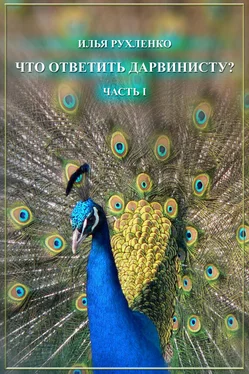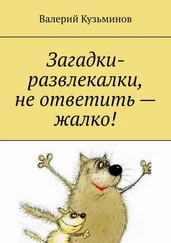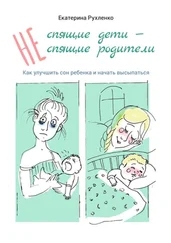Davalos L.M., Girranello A.L., Geisler J.H., Simmons N.B. Understanding phylogenetic incongruence: lessons from phyllostomid bats // Biol. Rev. 2012. V. 87. P. 991–1024.
Davis M.C., Dahn R.D., Shubin N.H. An autopodial-like pattern of Hox expression in the fins of a basal actinopterygian fish // Nature. 2007. V. 447. P. 473–476.
Davis B.W., Li G., Murphy W.J. Supermatrix and species tree methods resolve phylogenetic relationships within the big cats, Panthera (Carnivora: Felidae) // Mol Phylogenet Evol. 2010. V. 56. № 1. P. 64–76.
Dawkins R. The Greatest Show on Earth: The Evidence for Evolution. Free Press, New York, 2009. 470 p.
De Jong W.W. Molecules remodel the mammalian tree // Trends Ecol Evol. 1998. V. 13. № 7. P. 270–275.
Dugatkin L.A. Interface between culturally based preferences and genetic preferences: Female mate choice in Poecilia reticulata // Proc. Natl. Acad. Sci. USA. 1996. V. 93. P. 2770–2773.
Dugatkin L.A. Sexual selection and imitation: females copy the mate choice of others. // Am. Nat. 1992. V. 139. P. 1384–1389.
Eakley A.L., Houde A.E. Possible role of female discrimination against «redundant» males in the evolution of colour pattern polymorphism in guppies // Proc. Biol. Sci. 2004. V. 271. P. S299-S301.
Endler J.A., Houde A.E. Geographic variation in female preferences for male traits in Poecilia reticulata. // Evolution. 1995. V. 49. P. 456–468.
Endler J.A. Natural selection on color patterns in Poecilia reticulata // Evolution. 1980. V. 34. № 1. P. 76–91.
Evans J.P., Bisazza A., Pilastro A. Female mating preferences for colourful males in a population of guppies subject to high predation // Journal of Fish Biology. 2004. V. 65. P. 1154–1159.
Everett A., Tong X., Briscoe A.D., Monteiro A. Phenotypic plasticity in opsin expression in a butterfly compound eye complements sex role reversal // BMC Evolutionary Biology. 2012. V. 12. P. 232.
Exnerova A., Svadova K., Fousova P., Fucikova E., Jezova D., Niederlova A., Kopeckova M., Stys P. European birds and aposematic Heteroptera: review of comparative experiments // Bulletin of Insectology. 2008. V. 61. P. 163–165.
Exnerova A., Svadova K.H., Fucikova E., Drent P., Stys P. Personality matters: individual variation in reactions of naïve bird predators to aposematic prey // Proc. R. Soc. B. 2010. V. 277. P. 723–728.
Farr J.A. Male rarity or novelty, female choice behavior, and sexual selection in the guppy, Poecilia reticulata Peters (Pisces: Poeciliidae) // Evolution. 1977. V. 31. P. 162–168.
Fay J.G., Wychkoff G.J., Wu C.-I. Positive and negative selection on the human genom // Genetics. 2001. V. 158. P. 1227–1234.
Fischer K., Perlick J., Galetz T. Residual reproductive value and male mating success: older males do better // Proc. R. Soc. B. 2008. V. 275. P. 1517–1524.
Forbush E.H., Fernald C.H. The gypsy moth. Wright and Potter Printing Co, Boston. 1896.
Fossat P., Bacque-Cazenave J., Deurwaerdere P.De, Delbecque J.-P., Cattaert D. Anxiety-like behavior in crayfish is controlled by serotonin // Science. 2014. V. 344. P. 1293–1295.
Freitas R., Gomez-Ckarmeta J.L., Rodriques P.N. New frontiers in the evolution of fin development // Journal of Experimental Zoology Part B: Molecular and Developmental Evolution. 2014. V. 322. № 7. P. 540–452.
Freitas R., Zhang G., Cohn M.J. Biphasic Hoxd gene expression in shark paired fins reveals an ancient origin of the distal limb domain // PLoS ONE. 2007; doi: 10.1371/journal.pone.0000754
Fuchs B., Wang W., Graspeuntner S., Li Y., Insua S., Herbst E.M., Dirksen P., Bohm A.M., Hemmrich G., Sommer F., Domazet-Loso T., Klostermeier U.C., Anton-Erxleben F., Rosenstiel P., Bosch T.C., Khalturin K. Regulation of polyp-to-jellyfish transition in Aurelia aurita // Curr. Biol. 2014. V. 24. P. 263–273.
Gladyshev E.A., Meselson M., Arkhipova I.R. Massive Horizontal Gene Transfer in Bdelloid Rotifers // Science. 2008. V. 320. P. 1210–1213.
Godin J-G.J, Briggs S.E. Female mate choice under predation risk in the guppy. // Anim. Behav. 1996. V. 51. P. 117–130.
Gong A., Gibson R.M. Reversal of a female preference after visual exposure to a predator in the guppy, Poecilia reticulate // Anim. Behav. 1996. V. 52. P. 1007–1015.
Gould S.J. Evolution's erratic pace // Natural History. 1977. V. 86. № 5. P. 14.
Gouramanis C., Webb, J.A., Warren A.A. Fluviodeltaic sedimentology and ichnology of part of the Silurian Grampians Group, western Victoria // Australian Journal of Earth Sciences. 2003. V. 50. P. 811–825.
Grant B.S. Fine tuning the peppered moth paradigm // Evolution. 1999. V. 53. P. 980–984.
Grant B.S., Owen D.F., Clarke C.A. Decline of melanic moths // Nature. 1995. V. 373. P. 565.
Grant B.S., Owen D.F., Clarke C.A. Parallel rise and fall of melanic peppered moths in America and Britain // J Hered. 1996. V. 87. P. 351–357.
Grantham R., Gautier C., Gouy M., Jacobzone M., Mercier R. Codon catalog usage is a genome strategy modulated for gene expressivity // Nucleic Acids Res. 1981. V. 9. P. r43–r74.
Grantham R., Gautier C., Gouy M., Mercier R., Pave A. Codon catalog usage and the genome hypothesis // Nucleic Acids Res. 1980. V. 8 № 1. P. r49-r62.
Grehan J.R., Schwartz J.H. Evolution of the second orangutan phylogeny and biogeography of hominid origins // Journal of Biogeography. 2009. V. 36. № 10. P. 1823–1844.
Grether G.F. Carotenoid limitation and mate preference evolution: a test of the indicator hypothesis in guppies (Poecilia reticulata) // Evolution. 2000. V. 54. P. 1712–1724.
Gura T. Bones, molecules… or both? // Nature. 2000. V. 406. P. 230–233.
Gustafsson С., Govindarajan S., Minshull J. Codon bias and heterologous protein expression // Trends Biotechnol. 2004. V. 22. № 7. P. 346–53.
Hackett S.J. et al. A phylogenomic study of birds reveals their evolutionary history // Science. 2008. V. 320. № 5884. P. 1763–1768.
Hendrickson D.A., Krejca J.K., Martinez J.M.R. Mexican blindcats genus Prietella (Siluriformes: Ictaluridae): an overview of recent explorations // Environmental Biology of Fishes. 2001. V. 62. P. 315–337.
Howlett R.J., Majerus M.E.N. The understanding of industrial melanism in the peppered moth (Biston betularia) (Lepidoptera: Geometridae) // Biol J Linn Soc Lond. 1987. V. 30. P. 31–44.
Hughes K.A., Du L., Rodd F.H., Reznick D.N. Familiarity leads to female mate preference for novel males in the guppy, Poecilia reticulate // Anim. Behav. 1999. V. 58. P. 907–916.
Izzo A.S., Tibbets E.A. Spotting the top male: sexually selected signals in male Polistes dominulus wasps // Animal Behaviour. 2012. V. 83. P. 839–845.
Jantzen B., Eisner T. Hindwings are unnecessary for flight but essential for execution of normal evasive flight in Lepidoptera // PNAS. 2008. V. 105. № 43. P. 16636–16640.
Jones F. Insect colouration and the relative acceptability of insects to birds // Trans. Royal Entomol. Soc. London. 1932. V. 82. P. 443–453.
Jones A.G., Ratterman N.L. Mate choice and sexual selection: What have we learned since Darwin? // PNAS. 2009. V. 106. № 1. P. 10001–10008.
Kachroo A.H., Laurent J.M., Yellman C.M., Meyer A.G., Wilke C.O., Marcotte E.M. Systematic humanization of yeast genes reveals conserved functions and genetic modularity // Science. 2015. V. 348. P. 921–925.
Kalinka A.T., Varga K.M., Gerrard D.T., Preibisch S., Corcoran D.L., Jarrells J.,Ohler U., Bergman C.M., Tomancak P. Gene expression divergence recapitulates the developmental hourglass model // Nature. 2010. V. 468. P. 811–814.
Читать дальше
Конец ознакомительного отрывка
Купить книгу











